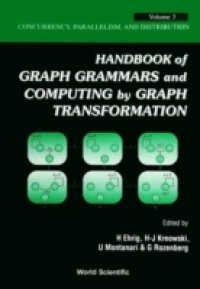Graph grammars originated in the late 60s, motivated by considerations about pattern recognition and compiler construction. Since then, the list of areas which have interacted with the development of graph grammars has grown quite impressively. Besides the aforementioned areas, it includes software specification and development, VLSI layout schemes, database design, modeling of concurrent systems, massively parallel computer architectures, logic programming, computer animation, developmental biology, music composition, visual languages, and many others.The area of graph grammars and graph transformations generalizes formal language theory based on strings and the theory of term rewriting based on trees. As a matter of fact, within the area of graph grammars, graph transformation is considered as a fundamental computation paradigm where computation includes specification, programming, and implementation. Over the last three decades, graph grammars have developed at a steady pace into a theoretically attractive and important-for-applications research field.Volume 3 of the indispensable Handbook of Graph Grammars and Computing by Graph Transformations presents the research on concurrency, parallelism, and distribution — important paradigms of modern computer science. The topics considered include semantics for concurrent systems, modeling of concurrency, mobile and coordinated systems, algebraic specifications, Petri nets, visual design of distributed systems, and distributed algorithms. The contributions have been written in a tutorial/survey style by the top experts.Contents:Graph Relabelling Systems and Distributed Algorithms (I Litovsky et al.)Actor Grammars and Local Actions (D Janssens)Concurrent Semantics of Algebraic Graph Transformations (P Baldan et al.)Modeling Concurrent, Mobile and Coordinated Systems via Graph Transformations (U Montanari et al.)Distributed Graph Transformation with Application to Visual Design of Distributed Systems (I Fischer et al.)High-Level Replacement Systems Applied to Algebraic Specifications and Petri Nets (H Ehrig et al.)Describing Systems of Processes by Means of High-Level Replacement (H J Schneider)Readership: Students and researchers interested in modern developments in computer science and in particular in three modern paradigms of computer science — concurrency, parallelism, and distribution.Key Features:Provides empirical evidence of business and investment environments in Taiwan and Mainland ChinaDescribes how the business and investment environment in Taiwan and Mainland China is suited to small- and medium-sized IT businessesEmphasizes the indicators of knowledge capital and social infrastructure elements that influence the choice of investment and production location by SMEs





 10 (1)
10 (1) 











